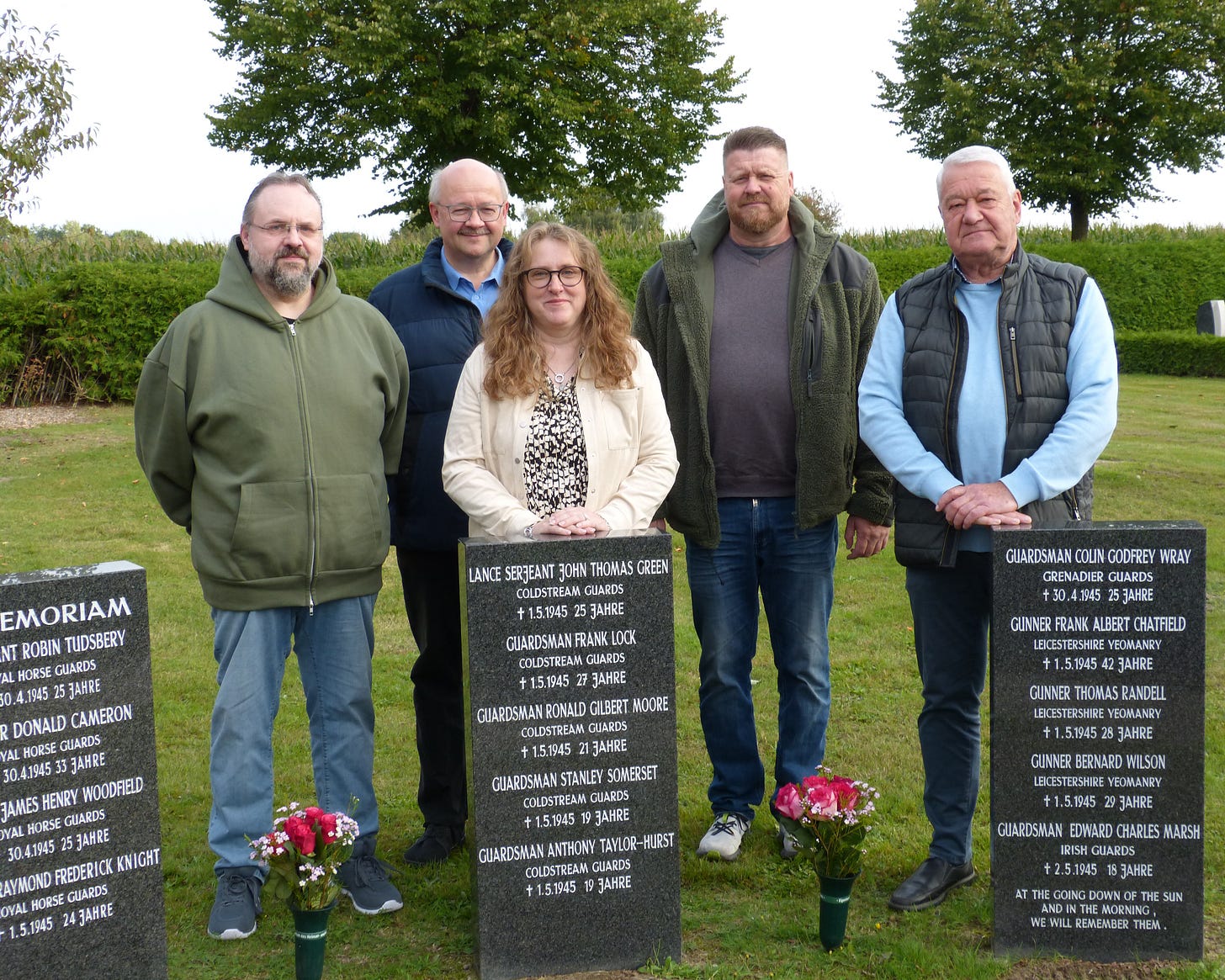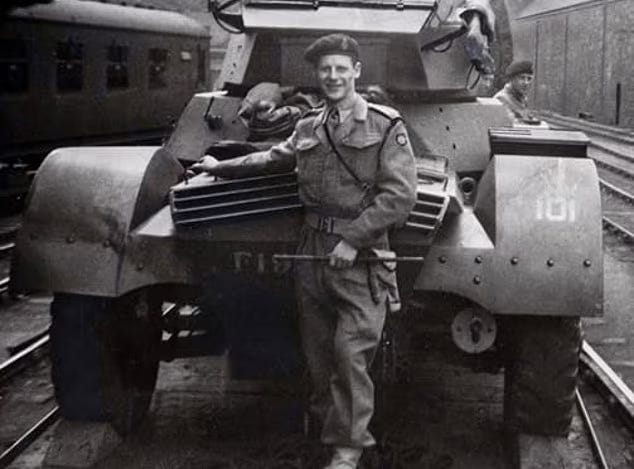The German volunteers uncovering the poignant story of Edinburgh’s last war dead
Exhibition charts extraordinary search for city soldiers killed in the final days of WW2

The day was dark. Wet and overcast, with no hint of sunshine illuminating the pancake flat farmlands around Siedlung Bullenholz as three men in a Daimler armoured car rumbled their approach to the adjacent town of Kutenholz.
Inside the vehicle the three British soldiers would have been alert, on reconnaissance a short distance ahead of an advance into northern Germany on the way to liberate nearby Cuxhaven. Nonetheless they would have been in pretty good spirits. The Germans were beaten after all, in full retreat. An end to the war was only a matter of time.
It was April 30th, 1945, probably in the late morning or early afternoon. Trooper Donald Cameron, the driver, hailed from Leith. He had married just a few months earlier, although he’d had little time with his wife Catherine. At 34 he was the oldest man in the vehicle – the leader, Lt Robin Tudsbery, and the, gunner Trooper James Woodfield, were both in their 20s.
As they rolled along the quiet road, a sea mine placed in a pipe beside the road was detonated by hiding German soldiers. All three men were killed in the blast. The following convoy had to make a detour, with no time to tend to the men. A team would return a week later to recover the bodies, and dig a field grave for them.
Within a few hours that same day, Hitler would be dead in his bunker in Berlin, found by his henchmen Goebbels and Bormann at 3.30pm slumped on his sofa after shooting himself in the head.
A Royal favourite
On 4 May, while one German delegation surrendered at the HQ of Field Marshal Bernard Montgomery as the process of unconditional surrender got underway, Tudsbery’s parents received a telegram to say their son had been killed. The war in Europe was finally over when Germany’s unconditional surrender to the Allies came into effect on 8 May. The guns and bombs stopped, but too late for some.
Tudsbery, born in England but brought up just outside Edinburgh, had served earlier in the war in the Royal household as second in command of the Household Cavalry detachment which guarded the Royal family. He had become well-liked by the young Princesses Elizabeth and Margaret, who were moved by his death. At the time it was reported that the palace sent them a message saying: ‘Their Majesties and the princesses were so distressed to hear of the death of your son, and I am to tell you how much they liked having him here at the castle.’
He was the only child of Sir Francis and Lady Isabella Tudsbery, who after the war built the beautiful Robin Chapel within the Thistle Foundation in Craigmillar, as a sanctuary of remembrance. The East Window shows a soldier’s field grave, marked with the date of Robin’s death.
Closure and comfort
On this Armistice Day, as we remember those who have died in wars and conflicts, this is more than another tale of the terrible cost of war, of the ultimate price paid by the young. It is a tale of remembrance yes, but it is also a tale of reconciliation, empathy and kindness that crosses borders and battlefields to speak eloquently to our shared humanity.
A team of volunteers from Kutenholz’s municipality of Fredenbeck have been researching victims of the Nazis in their area and commemorating them with memorial stones and plaques created in collaboration with the Germany War Graves Commission. They also contact families of those they come across, reaching out to offer closure and comfort. Their work has been supported by a local benefactor.
Debbie Bülau, who has led the work since it began a few years ago, said the group discovered that both foreign and German nationals had died in their municipality. The memorial stones in a special cemetery of honour remember the children of female forced labourers, prisoners of war, concentration camp inmates, victims of Nazi psychiatry, German soldiers and 17 British soldiers.
“However, it was not only important to us to remember all these deceased people, so we also set out to find their families to let them know that we have not forgotten their loved ones. This is how we came into contact with Edinburgh, because during our research on British soldiers, we first came across a newspaper from 2013. It said that Robin Tudsbery was once one of the Royal Family’s bodyguards, and that after his tragic death his parents had the Robin Chapel built in Edinburgh in his memory, and the Queen was visiting to mark its 60th anniversary.”
Wonderful friendships
Contact with representatives of Robin Chapel and the Tudsbery family was quickly established with the help of Thistle Foundation trustee Neil Morrison.
Debbie added: “Neil was an enormous help to us, in fact without his help much of this would not have happened.




